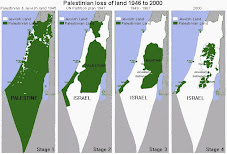The Gaza Strip has been the setting of a protracted political and socio-economic crisis. Recent events have resulted in a severe deterioration of the already precarious living conditions of the people in Gaza and have further eroded a weakened health system.
The closure of Gaza since mid-2007 and the last Israeli military strike between 27 December 2008 and 18 January 2009 have led to on-going deterioration in the social, economic and environmental determinants of health.
REFERRAL ABROAD OF PATIENTS WITH SERIOUS MEDICAL CONDITIONS FOR SPECIALIZED TREATMENT OUTSIDE GAZA
Many specialized treatments, for example for complex heart surgery and certain types of cancer, are not available in Gaza and patients are therefore referred for treatment to hospitals outside Gaza. But many patients have had their applications for exit permits denied or delayed by the Israeli Authorities and have missed their appointments. Some have died while waiting for referral.
1103 applications for permits for patients to cross Erez were submitted to the Israeli Authorities in December 2009. 21% had their applications denied or delayed as a result of which they missed their hospital appointments and had to restart the referral process.
Two patients died recently while awaiting referral - one in November and one in December. 27 patients have died while awaiting referral since the beginning of the year.
DEATH OF FIDAA TALAL HIJJY
Fidaa Talal Hijjy, 19 years old.............
Fidaa died on 11 November 2009. The Israeli Authorities approved her request on 12 November 2009, three days after her hospital appointment and one day after her death.
PROVISION OF MEDICAL SUPPLIES – CENTRAL DRUG STORE
Supplies of drugs and disposables have generally been allowed into Gaza. However, there are often shortages on the ground mainly because of shortfalls in deliveries. The table below shows the drugs and disposables that are out of stock as a percentage of the essental list. The essential drugs list contains 480 items, and the medical disposables list is 700 items.
Delays of up to 2-3 months occur on the importation of certain types of medical equipment, such as x-ray machines and electronic devices. Clinical staff frequently lack the medical equipment they need. Medical devices are often broken, missing spare parts or out of date.
TRAINING OF HEALTH STAFF
- - Health professionals in Gaza have been cut off from the outside world. Since 2000, very few doctors, nurses or technicians have been able to leave the Strip for training eg to update their clinical skills or to learn about new medical technology. This is severely undermining their ability to provide quality health care. An effective health care system cannot be sustained in isolation from the international community. - During the health strike from end August to end December 2008, an estimated 1750 doctors, nurses and non-clinical staff from hospitals and health clinics went on strike and many of their jobs were filled by new people recruited by the de facto authority. Many of the staff who went on strike have not returned to their jobs - In August 2008, two thirds of hospitals in Gaza had no maintenance staff. All Gaza hospitals . except the two in Rafah - now have engineers and technicians in post. But three quarters of technicians surveyed by WHO West Bank and Gaza in May 20091 had been in post for less than one year. Whilst half of the engineers had been trained in medical equipment maintenance, only one in four technicians had had any specific training. - In medical schools and public health programs, curriculum development processes do not reach international standards.
GAZA'S ECONOMY IN COLLAPSE
Rising unemployment (41.5 percent of Gaza's workforce in the first quarter of 20092) and poverty (in May 2008, 70 percent of the families were living on an income of less than one dollar a day per person3) is likely to have long term adverse effects on the physical and mental health of the population.
WATER: OVER-EXTRACTION, SALINITY AND NITRATE LEVELS
The increasing salinity and high levels of nitrates in water supplies from the over-extraction of the ground water and the intrusion of salt water is a major concern for the safety of drinking water, particularly for children they are most vulnerable to high nitrate levels4. Salinity levels in water wells in most parts of the Gaza Strip are above the 250 mg/liter limit established by WHO, and nitrate concentrations exceed WHO guidelines of 50 mg/liter (up to 331 mg/l).
OPERATION "CAST LEAD" -- IMPACT ON HEALTH FACILITIES AND STAFF
- - 16 health workers killed and 25 injured on duty
- - Damaged health services infrastructure:
- 15 of 27 Gaza's hospitals
- 43 of its 110 Primary Health Care services
- 29 of its 148 ambulances
- - The lack of building materials is affecting essential health facilities: the new surgical wing in Gaza�fs main Shifa hospital has remained unfinished since 2006. Hospitals and primary care facilities, damaged during operation �eCast Lead�f, have not been rebuilt because construction materials are not allowed into Gaza. Full story







